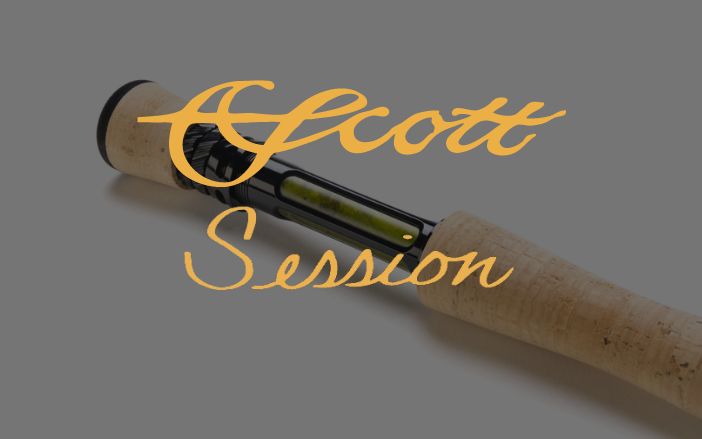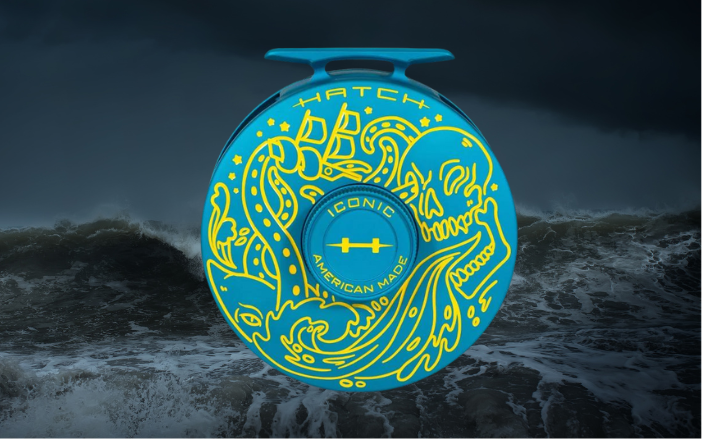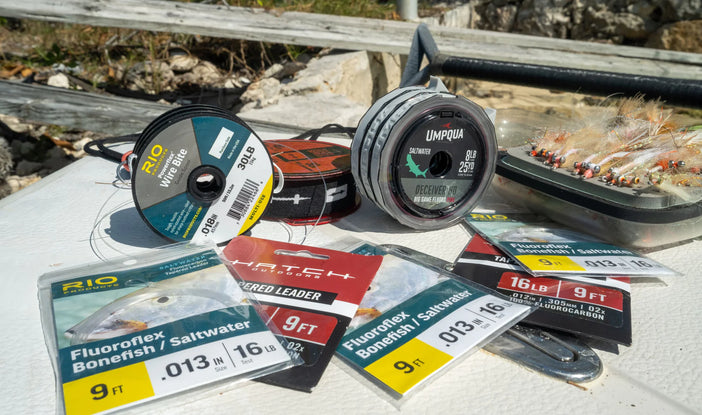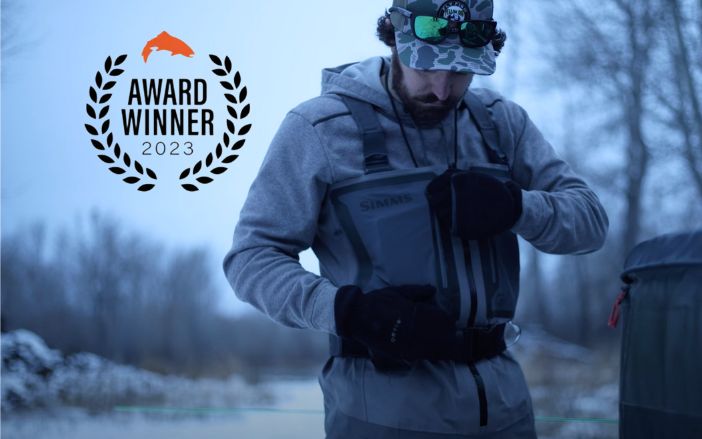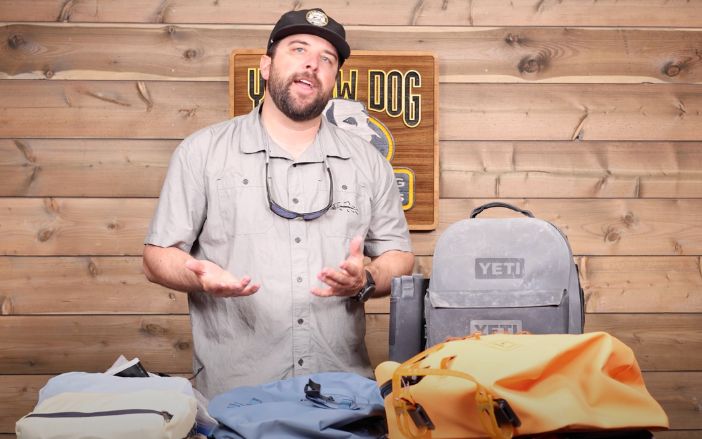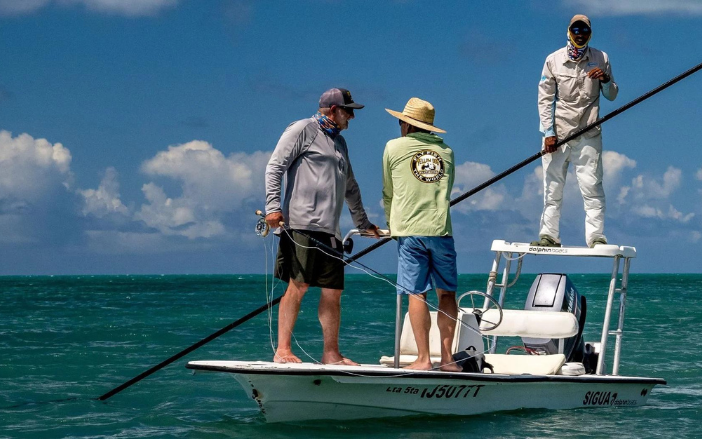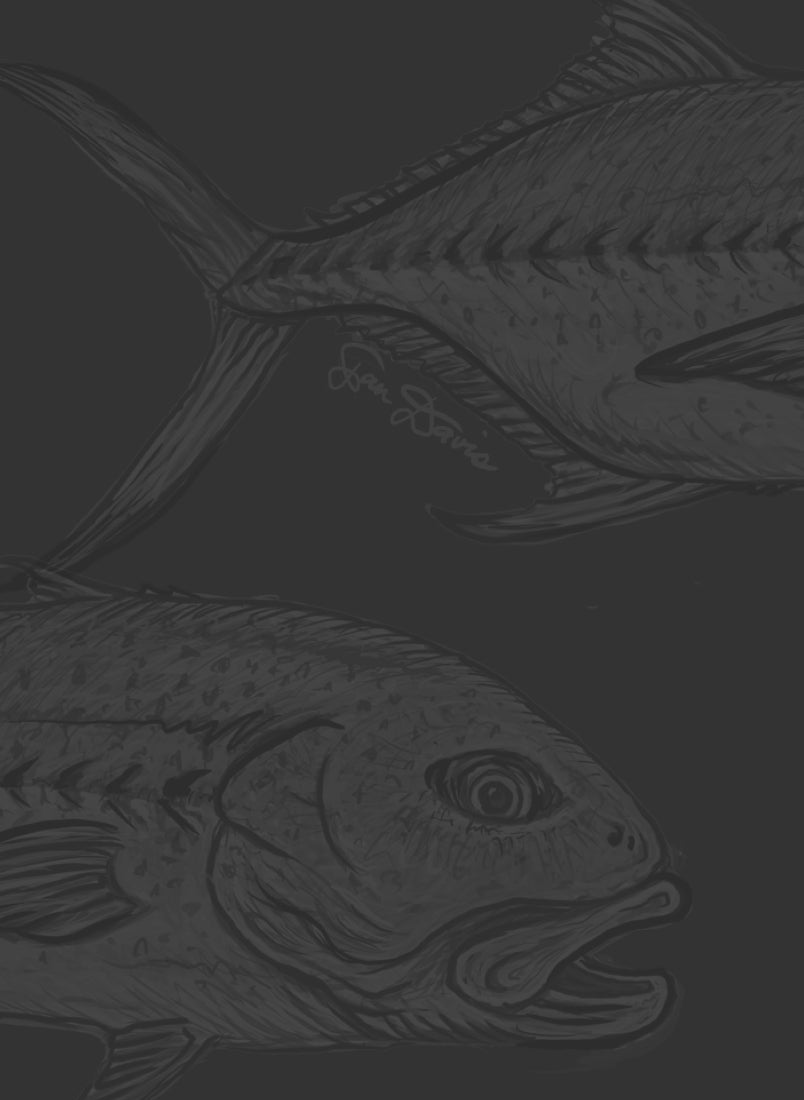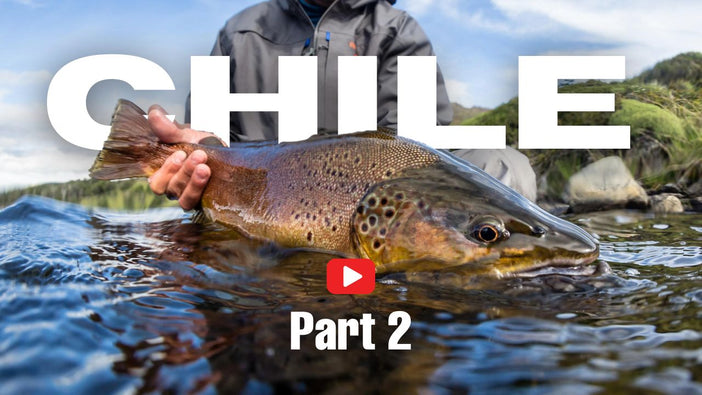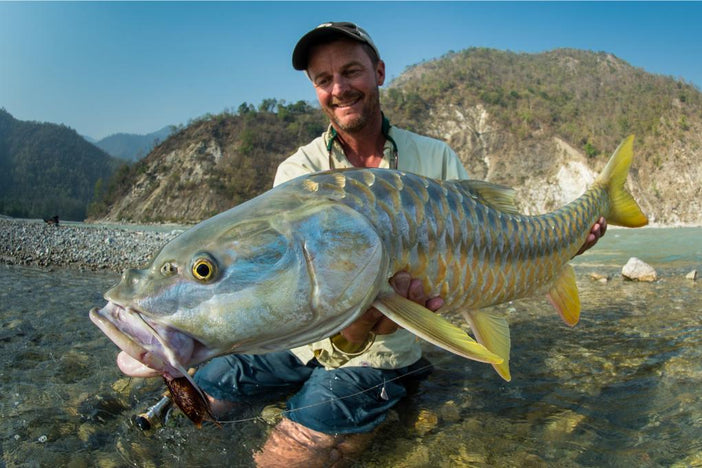Ah, summertime! The anticipated warmer weather that marks the end of winter’s hold is always a welcomed sight for fly fishermen who get to shed their winter layers and prepare for the great springtime conditions. While the warmer temperatures start to turn on the eat for fish, for anglers living in the western United States, they know that this time of year also means that in order to connect with hungry fish, they will be navigating potentially swollen high flow rivers filled with mountain runoff.
Here at Yellow Dog, we have assembled a list of useful tactics for fly fishing fast water.
Let’s start with the basics.
How does high water change a fisherman’s approach to the river?
Out west, we deal with snow. Runoff happens essentially when you have high elevation snow melting rapidly which creates a very sudden and often times very large increase in water volume and current flows of rivers.
The water, after all, eventually has to melt and go somewhere. In Montana, that typically starts as soon as early May and subsides sometime around early June or maybe not until early July depending on the river drainage and snowpack levels.
Each drainage can be a little bit different. During runoff, a lot of the rivers are flowing very high and can be muddy making water visibility substantially less. With water levels at this time being quick and high, exercising caution during this time is the wise approach, but fishing can be one of the most productive times of the year!
High water can be positive for a river in the long-run. Sometimes rivers that haven’t seen high water for a long time need a good flush to clean out the river, move out silt and moss and grass that may have built up over the long years of low water. High flows can rejuvenate a river in the long-run and give it a fresh start.
Where do fish hold during runoff, how does the river change, and how does the fishes’ diet change?
As the seasonal swelling takes hold of a Springtime river system, it’s interesting to think about the adaptations the fish need to adjust to.
A big river like the Yellowstone in peak runoff can reach flow levels of 30,000 CFS, and it’s amazing that the fish can find a place to take refuge and still grab the odd meal here and there.
Fish during runoff hold around inside bends and on slower banks behind obstructions where they can seek some haven and not exert a lot of energy. They are getting into places where food would naturally settle out like the bottom of an island, behind downed trees, or in slack water where bugs and other creatures they feed on would maybe settle out.
During runoff, fish will hold in almost all water that an angler would look to find them in ordinary flow conditions, but heavy runoff the places where they sit would normally be dry land at any other time of year.
You’ll find them in sheltered areas that don’t have a ton of current to it compared to surrounding raging current like behind an island that has a lot of small willows or amongst a flooded island.
They will also sit at the mouths of small creeks and feeder streams, they’ll even shoot up a smaller feeder stream in high water.
It’s important to remember that what is in the river doesn’t change and the fish still are feeding. Think about when we get rain in the spring/summertime and you see the common sight of worms crawling across the pavement. It holds true that these signs indicate that fish will likely be eating a lot of earthworms during runoff and choosing a San Juan worm when the river is dirty and high will be a likely productive pattern.
On tailwater rivers that have a lot of biomass in them like the Bighorn and the Missouri, sometimes high water can really stir up a lot of food like scuds and sowbugs and those fish gorging themselves on the bountiful insect because of the high water.

What are the most productive methods to fish runoff and how do you approach a river when wade fishing during runoff?
Common sense during high flows applies. If the river is off-color and you can’t see the river bottom, where there may be a drop-off, exercise caution with where you will be fishing during the day.
However, once rivers start to drop, and get kind of close to that fishable and floatable stage, that’s when you want to head out to your local stream with a fly rod, waders, belt and boots for stability. Typically, during high water, you’re going to have opportunities to move some big, strong fish.
You want to pick stretches of water that are maybe easier and a little bit more forgiving to navigate. Fishing from the bank can be quite good during higher water, although it’s not always easy to get around. Those high flows definitely will push fish right up on the bank so they’re literally right in front of you.
If you’re floating, you definitely need to be on your toes and be aware. If you’re wade fishing, be mindful of where you’re fishing and your surroundings. You often don’t even have to get in the water because you’ll be fishing that first three feet off the bank.
Your high-water fishing method can consist of subsurface nymph patterns or fishing a streamer - possibly event with a nymph below it. Targeting the slower water is where you want to be fishing and have no doubts, these fish are hungry.
While not always, sometimes you can find some hatches. In some rivers, the trout have adapted to feeding on the surface in off-colored water. Out here in the US West, many of the trout have adapted to still feeding actively in high water on emergers and adult duns, so always keep your eyes open for rising fish in slower water!
Fishing towards the end of our runoff here in the US West, you’ll find stoneflies and mayflies hatching, indicating that anglers can get fish on the surface or close to the bank. Fishing dry flies on the bank or in slower water sections can be a great way to go. Having appropriately weighted flies and fly patterns for deeper, bigger, dirtier water, is definitely important.
Frequently, we will fish bigger, heavier, flashy flies during that dirty water period. Half of the battle will be showing up to the river and observing what’s happening around you. It’s different in every situation. Just because the water is high and dirty doesn’t mean the fish won’t come up to eat something, however, getting your fly to the depth of where the fish are holding and willing to eat or move to get it, is definitely critical. Another very effective pattern would be any dark-colored streamers that will have a big profile and shadow in high water conditions.
While high water runoff offers its challenges to anglers, it is also a great chance to hook into some fish – and also some of the largest fish of the year. Good luck out there!
Related Articles:
- Angling Through Runoff: A Little Extra Effort Is Required
- When Is The Best Time To Fly Fish In Montana?
- Beyond the Salmonfly: 6 other Montana fly fishing hatches
- The West's Best Hatches And Where To Fish Them
- Tips to Get on the Water Quickly






